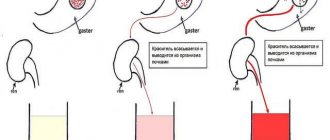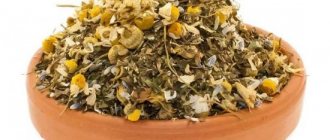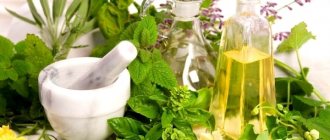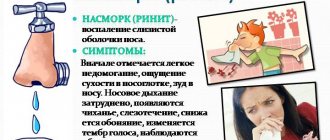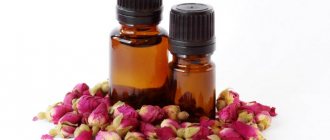What is gastric erosion?
Erosion is the name given to superficial damage to the gastric mucosa, in which the muscle tissue of the organ is not involved in the pathological process. Healing occurs without scar formation. Visually, gastric erosion consists of small areas of defects that vary in shape.
Erosion is the name given to superficial damage to the gastric mucosa in which the muscular tissue of the organ is not involved in the pathological process.
Damage can be single, with 1-3 foci, or multiple, with more than 3 foci located in different parts of the stomach. The main danger of erosion is the potential development of ulcers, provoking tumor formations of the colon, pathological changes in the liver, etc. Therefore, at the first suspicion of pathology, you should immediately contact a specialized specialist.
There are acute or chronic forms of the disease. Symptoms of acute gastric erosion usually affect the fundus or body of the stomach. In a chronic process, the antrum is affected (located below all other segments of the organ).
Clinical manifestations of gastric erosion are divided into the following groups:
- ulcer-like: with this clinical picture, the disease is accompanied by severe pain, which usually begins after eating, but can also occur on an empty stomach. Other symptoms are belching, vomiting, heartburn. Ulcer-like symptoms can occur in both acute and chronic gastric erosion;
- hemorrhagic: these are symptoms associated primarily with anemia and bleeding. Often there are no obvious signs of the disease. This course of gastric erosion is characteristic of the acute form of the disease.
Symptoms and signs of gastric erosion
The location of erosions in the stomach is varied, so their clinical presentation often differs in the type and area of localization of pain and other sensations. Symptoms of gastric erosion include hemorrhagic and ulcer-like signs.
Therapy for gastric erosion is carried out depending on the predominance of the clinical picture of the disease
As a rule, the acute form of erosive gastritis ends with rapid (5-15 days) epithelization of erosions. After they heal, no detectable marks remain on the gastric mucosa.
Hyperplastic erosions often become chronic and can exist for several years and then disappear. Some erosions of this type exist for a very long time, recurring as irritating factors influence, often worsening and surviving.
Ulcer-like symptoms of erosion appear at any stage of development of the defect:
- pain after eating;
- sometimes – pain on an “empty stomach”;
- frequent heartburn;
- nausea, belching air.
Hemorrhagic symptoms (occur in 1/5 of patients suffering from gastric erosions):
- dark stool due to bleeding from the defect;
- rarely - vomiting with blood;
- drop in hemoglobin, anemia;
- weakness, low performance.
Symptoms of gastric erosion
Erosion of the gastric mucosa is accompanied by very pronounced symptoms . A distinctive feature is that painful sensations cannot be completely eliminated even within several months from the start of treatment for the pathology.
Clinical manifestations of pathology should be considered:
- spasms in the abdominal area, which become much more intense due to eating or at night;
- belching and burning sensation in the throat;
- nausea, which ends with productive vomiting, bringing serious relief;
- the presence of bloody impurities in the stool, indicating an internal form of bleeding;
- digestive disorders.
Other symptoms indicating that it is necessary to treat gastric erosion include an increased degree of fragility of the nail plates, as well as dry skin, general weakness and fatigue of the body.
In addition, experts pay attention to the likelihood of problematic bile excretion, a decrease in hemoglobin levels and destabilization of the sense of smell. Most rarely, the disease occurs without any symptoms, which occurs with the secondary appearance of erosion.
Acute gastric erosion
The focus of the pathology is located in the body of the stomach or at its bottom. When conducting laboratory tests, the affected mucous membrane appears inflamed; timely conservative treatment of erosion is required in a hospital setting. With proper selection of medications and strict adherence to medical instructions, the localization of the affected area can be eliminated in 6-7 days without consequences for health.
Gastric erosion symptoms and treatment
The clinical picture of gastric erosion has many similarities with peptic ulcer disease. For this reason, an accurate diagnosis can be established after several diagnostic techniques. Typically, during endoscopy, erosion appears as small spots on the mucous membrane, similar to ulcers. Often the disease occurs without symptoms or the nature of the symptoms is mild (there are no other clinical signs except heartburn).
The classic manifestation of gastric erosion comes down to a complex of phenomena:
- pain in the stomach is the main sign of pathology: the nature of the pain is not specific: the intensity may increase, then temporarily fade, a slight pain may appear (the patient is taking a drug like No-shpa) or pain tolerance becomes impossible. Severe pain indicates acute erosion. More dangerous are pains of moderate and low intensity, when their relief with analgesics contributes to the rapid growth of the source of the disease;
- bleeding: is an alarming symptom that requires immediate medical intervention. Surgery can be avoided if blood is found in the patient's vomit or feces. If the vomit becomes dark brown and there are obvious signs of internal bleeding, it is not always possible to maintain the integrity of the stomach; to save the patient, they sometimes resort to an ectomy of the affected part of the stomach;
- nausea and vomiting: in the absence of other signs, they are not specific signs of erosive processes. Nausea and vomiting should not be excluded from signs of erosion if their frequency becomes regular or the symptom is accompanied by other manifestations of the disease;
- by signs of brittle nails and hair, as well as dry skin: gastric erosion is judged on the basis of a physiological basis for the pattern of anemia due to internal bleeding. Low hemoglobin causes blue skin, thinning and unhealthy color of nails and hair.
Treatment of erosion
Therapy for gastric erosion is carried out depending on the predominance of the clinical picture of the disease.
Therapy for gastric erosion is carried out depending on the predominance of the clinical picture of the disease. Increased stomach acidity is eliminated with the help of antacids. To prevent the destructive effect on the gastric mucosa, the patient is advised to take proton pump blockers. If the patient complains of heartburn, belching and constant nausea, medications with an enveloping effect are prescribed. Of course, compliance with a therapeutic diet is a prerequisite.
In most cases, the provocateurs are the liver or various vascular diseases. That is why complex treatment is prescribed to ensure maximum effect. However, in any case, the complete treatment process is carried out under constant monitoring using endoscopy.
In more rare cases, patients are prescribed antibiotics, but only if the disease is caused by an infection. More often, erosion is caused by various medications, which, after absorption, can damage the walls of the gastric mucosa due to their composition. It is worth knowing that drug treatment may not bring results if the diet is not followed.
It is necessary to exclude fried foods, meat broths, smoked and spicy foods. You should also remove strong tea from your diet. coffee. natural juices. Before you start eating, you need to know what exactly will not provoke the activity of stomach acid. In addition, in combination with traditional treatment, you can use traditional medicine methods, this can be an infusion of celandine, which helps excellent healing of erosion.
However, before this, it is necessary to consult with a gastroenterologist, since the body’s reaction in such conditions may be inadequate. In addition, celandine can cause poisoning of the body if it is drunk without the consent of a doctor. However, in general, gastric erosion gives a good prognosis if the patient follows a diet and is under constant supervision of the attending physician.
Can I take it if I have gastritis?
The juice of the plant shows good results in the treatment of gastritis. It also gently counteracts erosive processes in the stomach and weakening of its mucous membrane. In addition, a room healer significantly reduces the risk of acute periods of gastritis.
Important! Doctors indicate that the juice of the plant is best to treat chronic gastritis. But during the period of exacerbation of the disease, you cannot use only aloe - treatment must be accompanied by medications prescribed by the attending physician.
Treatment of stomach erosion using traditional methods
Treatment of gastric erosion involves taking medications prescribed by your doctor and following a diet. Medicinal preparations and traditional medicine methods can be used as an aid.
Often, to treat gastric erosion, patients of gastroenterologists resort to traditional medicine methods. However, it should be noted that treatment with medicinal herbs can only be used as an addition to the main treatment of the disease. To treat stomach erosion, the following infusions are used: sage, yarrow, knotweed, celandine, mint, St. John's wort, and chamomile.
An infusion of a mixture of herbs: St. John's wort, chamomile, yarrow and celandine helps eliminate the main symptoms of the disease. The ingredients should be mixed in equal proportions, pour a glass of boiling water and leave for an hour.
Often, to treat gastric erosion, patients of gastroenterologists resort to traditional medicine methods
It is recommended to drink the infusion at least three times a day, half an hour before eating.
The most effective folk remedy for stomach erosion is considered to be an infusion of celandine. However, it should be remembered that the plant itself is very poisonous, so exceeding the permissible dose of the product can lead to unpleasant consequences. The infusion is prepared as follows:
One tablespoon of crushed celandine leaves is poured into glasses of boiling water and infused for 2 hours. The resulting medicine should be taken one teaspoon one hour before meals three times a day. One course of treatment is one month. After a ten-day break, taking the celandine infusion can be continued for another month.
Infusions of medicinal herbs are recommended to be taken only fresh. Storing the product in the refrigerator reduces its healing properties. A good remedy for getting rid of stomach erosion is natural honey. When erosion is combined with a stomach ulcer, it is recommended to use one spoon of propolis in the morning instead of honey.
Treatment of stomach ulcers and gastritis: recipe for aloe with honey
Our readers successfully use Monastic Tea to treat gastritis and ulcers. Seeing how popular this product is, we decided to bring it to your attention. Read more here...
One of the oldest and most effective recipes for chronic gastrointestinal diseases is a recipe for aloe with honey for the stomach.
If you do not start treating the disease in time, it can develop into a complicated form, and sometimes into a chronic one. At the first symptoms of gastritis or stomach ulcer, you should contact a gastroenterologist to clarify the diagnosis.
Previously, every family had at least one pot of aloe flower on the windowsill. Some people inherited this flower from their grandmothers, while others grew it because they already knew the healing properties of this agave and used it for its intended purpose. Grandparents used the aloe flower as a natural home medicine cabinet and they were partly right.
Aloe juice has such beneficial properties that are not inherent in any of the indoor plants:
- promotes rapid regeneration of injured skin;
- is a unique antiseptic;
- activates the secretion of the gastrointestinal tract;
- replenishes the body with potassium, manganese, phosphorus, iodine, fluorine and others; activates the immune system;
- moisturizes the skin;
- relieves pain; cleanses the intestines of toxins and harmful substances;
- renews blood.
Aloe is like a charger for the human body. It also contains the substance allantonin. It is this substance that nourishes and moisturizes the skin, penetrating into the deep layers. Aloe for the stomach is an analgesic and antibacterial agent.
Honey not only enhances the healing properties of aloe, but also has a healing effect on the human gastrointestinal tract. It is rich in amino acids, enzymes, and microelements, which are quickly and completely absorbed by the body. Honey has antiseptic and immunostimulating properties.
Doctors diagnose gastritis in more than half of schoolchildren and students at an early age. Poor nutrition, bad habits and disrupted eating patterns are the main causes of gastritis. Restoring stomach functions and treating gastritis is a long process. Therefore, many parents, fearing long-term use of pills and their negative impact on other internal organs, prefer to give children natural medicines for gastritis along with pills.
- 1How to prepare the product?
- 2Tincture for the treatment of gastrointestinal diseases
- 3Addition to the treatment plan
- 4Existing contraindications
1How to prepare the product?
Aloe should be used as a medicine for the stomach only if it is more than 3 years old. To prepare a medicinal medicine, it is necessary to pick the largest leaves, because they contain the largest amount of juice and medicinal substances. Before cutting off the leaves, it is advisable not to water the plant for about 2 weeks. Next, you need to cut off the 10 bottom leaves, wrap them in a plastic bag and put them in a cool place, preferably in the refrigerator. Under extreme conditions, the leaves of the flower will begin to produce biogenic stimulants, which are the basis for the medicinal properties of the indoor flower. It is advisable to cut the leaves with a ceramic knife so that the juice does not oxidize. Honey must be of high quality. Poor quality honey, to which sugar has been added, will not have the desired effect in treatment.
A mixture of aloe and honey for the treatment of gastritis.
Medicine for gastritis is prepared from pre-prepared aloe leaves and honey in a 1:1 ratio.
Aloe leaves heated in a water bath, previously crushed to a mushy form, are mixed. The crushed leaves are sent to heated honey. Boil everything together for about 5 minutes. Next, the prepared medicine is cooled, transferred to a container and stored in a cold place.
You should not immediately prepare a large amount of the mixture, as over time the beneficial properties are lost. You need to take 2 teaspoons of this mixture in the morning and evening on an empty stomach. Treatment of the stomach with honey and aloe for gastritis continues in courses: 3 weeks of taking the mixture, one week of rest and again 3 weeks of treatment.
2Tincture for the treatment of gastrointestinal diseases
Often these two components are combined with alcohol-containing drinks in the form of tincture. Usually natural red wine or vodka is used.
They try to use Cahors for cooking. They prefer it because it has healing properties.
For preparation you will need Cahors, freshly squeezed aloe juice and honey in equal proportions. Mix all the ingredients, transfer to a glass jar and place the resulting medicine in the refrigerator. The medicine should be taken before meals, 2 tablespoons 3 times a day.
If it is difficult to obtain juice, you can use leaves grated on a fine grater instead. Mix the resulting pulp with honey and leave in a dark place for 2 days. After the expiration date, add Cahors to it and let it brew for another 2 or 3 days.
The resulting mixture can be used not only for the stomach, but also for sinusitis, asthma, bronchitis, acute respiratory diseases and as an immune-strengthening agent.
Aloe and honey with vodka are used to treat gastritis. For this you will need honey, aloe leaves and vodka. Mix 5 parts of vodka with 7 parts of honey. We twist the leaves in a meat grinder in the amount of 5 parts and add them to vodka and honey. Mix the resulting mixture thoroughly, transfer it to a glass jar and store it in a dark place for 2 months.
After the mixture is ready, it must be used before eating. Immediately after consuming the tincture, you should eat a piece of butter.
Treatment of gastritis with aloe and honey for high acidity.
One of the symptoms of increased stomach acidity during gastritis is an unpleasant burning sensation. This is how gastritis with high acidity manifests itself. In order to suppress high acidity and cope with pain, take a mixture of aloe, honey and potato juice. The recipe is more than simple. You need to take 2 tablespoons of aloe juice and honey and add a glass of potato juice to them. Take the mixture only in the morning on an empty stomach.
Treatment of gastritis with aloe and honey for low acidity.
Aloe for gastritis is used as a medicine both in cases of high and low stomach acidity. Doctors prescribe a special diet for a patient with low acidity, this will help the stomach to rest. For treatment, honey dissolved in water, aloe juice, plantain juice, and a decoction of raspberry leaves in equal proportions are used. Store the mixture in the refrigerator and use before each meal.
A mixture of honey, aloe juice and butter and cocoa also stimulates the production of gastric juice. Preparing a healing decoction will take a lot of time. Mix all ingredients in equal proportions, place in a ceramic bowl and place in an oven heated to 180°C for 3 hours. Then you need to let the mixture cool and then strain it. You need to take the decoction for 3 months.
3Addition to the treatment plan
When gastritis is severely advanced, it turns into an ulcer. Treatment for a patient with this disease is prescribed by a doctor. Aloe with honey for ulcers should be used as a treatment along with medications prescribed by a doctor.
Traditional recipes for stomach erosion
If you experience severe discomfort in the epigastric region, all traditional treatment methods should be agreed with your doctor, as this can lead to a stomach ulcer!
Cumin seeds from erosion
Cumin seeds are considered a natural antacid. They protect the gastric mucosa from high acidity and treat nausea and bloating. Cumin can be brewed with mint, chamomile, lemon balm and drunk as tea. Brew 1 spoon of the healing mixture, pouring 200 ml of boiling water, leave for 15 minutes, then filter and consume 1/3 cup orally half an hour before meals. Caraway oil, taken a teaspoon 3 times a day, also helps with stomach pain.
Ginger root for erosion
Ginger root effectively treats an inflamed stomach. This natural medicine has anti-inflammatory and antibacterial properties. Add 1 teaspoon of fresh ginger root to 1 glass of boiling water, let it steep for 10 minutes, strain, add honey and drink slowly 2-3 times a day for a week.
Ginger root effectively treats an inflamed stomach
Alternatively, you can mix 1/2 tablespoon of ginger juice and honey, then drink the resulting syrup for a week before meals, 2 times a day. It should be noted that ginger may interfere with medications prescribed for blood thinners and high blood pressure.
Sea buckthorn oil or rosehip oil for erosion
Sea buckthorn oil or rosehip oil is highly recommended for erosive lesions of the stomach. Both products have an enveloping, wound-healing, choleretic effect due to a large number of biologically active substances. Take sea buckthorn or rosehip oil in the morning, on an empty stomach, 1 teaspoon for a month.
Potato juice for erosion
Potato juice is another effective remedy for erosive gastritis. Peel and grate 1-2 raw potato tubers, then squeeze out the juice and dilute it with a little warm water. Use the healing mixture 3 times a day, 30 minutes before meals for 2 weeks.
How to treat stomach erosion at home?
If a diagnosis of “stomach erosion” is made, treatment with folk remedies should only be carried out with the permission of a doctor, because not all prescribed drugs can be combined with herbs. They help:
- decoctions of celandine and calamus;
- sea buckthorn oil;
- herbal preparations;
- raw potatoes;
- honey;
- propolis;
- strawberry.
About how to treat stomach erosion at home, a little more detail:
- Celandine.
Removes pain and burning. Brew 1 tbsp in a thermos. spoon of raw material and take portions three times a day. - Cumin seeds.
They are valued as a natural antacid, protect the gastric mucosa, and relieve nausea and bloating. Steam 1 tbsp. spoon per glass of boiling water, drink a third of a glass half an hour before meals. - Ginger root.
It has anti-inflammatory and antibacterial properties, 1 teaspoon of fresh grated root is poured into a glass of boiling water, infused and drunk with honey. - Immortelle.
Relieves severe pain during exacerbation of erosion, heals the mucous membrane. Dried leaves are poured with a glass of boiling water, infused, and drunk 0.5 tbsp. before eating. - Calamus root.
Strong antioxidant. Steam 1 teaspoon of dry grated root, boil for 20 minutes in a water bath, drink 50 g for two weeks before meals.
How to eat properly with stomach erosion
https://youtu.be/CF-3jyqDdk4
Gastric erosion is a disease whose symptoms resemble peptic ulcers. It is characterized by nausea, vomiting, heartburn, pain, a gnawing sensation between meals and at night, loss of appetite, bloating, which manifest themselves in varying degrees of severity.
Diet plays an important role in the treatment of gastric erosion. Avoid citrus fruits: orange, lemon, and grapefruit juice are irritating to the mucous membranes. If you have constant or recurrent epigastric pain, avoid fried, spicy and canned foods, and high-fat dairy products.
In addition, if there is even the slightest sign of pancreatitis, you need to give up spicy, pickled, smoked foods. Give preference to skim or one percent milk, low-fat yogurt, cheese and sour cream.
Diet plays an important role in the treatment of gastric erosion
Alcohol, coffee, strong tea, and tomato juice increases stomach acidity. They should also be abandoned in favor of more gentle drinks, for example, rosehip decoction, tea from St. John's wort, chamomile and yarrow. All foods and drinks are best consumed warm - too hot and cold can increase gastric secretion and lead to painful cramps.
Diet for gastric erosion
The diet prescribed for gastric erosion mechanically, thermally and chemically spares the gastrointestinal tract. Sparing the stomach means avoiding eating hard, coarse, fibrous foods. Products should not be fried or baked to form a rough crust. Boiled or steamed food is a priority. Products that increase gastric secretion are excluded from the diet.
Patients should eat food at a comfortable temperature - everything very cold and hot is excluded. Overeating is absolutely unacceptable - patients are recommended to eat small portions 4-6 times a day.
A diet for stomach erosion relieves the burden on the digestive organs and thereby helps accelerate regeneration processes. The diet should be supplemented with therapeutic measures recommended by the doctor (drugs that reduce acidity and promote healing of the mucous membrane are prescribed).
Sources:
- https://abc-medicina.com/gastrojenterologija/erozia-zheludka
- https://gastritinform.ru/pallcare.ru/
- https://gastritinform.ru/pasmurki.ru/zhenskie-hitrosti/eroziya-zheludka-simptomyi-dieta/
- https://gastritinform.ru/bzhkt.ru/eroziya-zheludka.html
- https://gastritinform.ru/najjarekochak.cf/moch.html
- https://lechenie-simptomy.ru/eroziya-zheludka
- https://mamsy.ru/blog/eroziya-zheludka-lechenie-narodnymi-sredstvami/
- https://edunclub.ru/diet/1345-dieta-pri-erozii-zheludka/
Special diet for erosion
In the treatment of all gastrointestinal diseases, along with medications, it is worth following a specific diet. Even after completing the main course of medication, the diet must be followed for several more months.
The principle of nutrition is aimed at ensuring that the gastric mucosa does not receive irritation of any nature (mechanical or temperature) from the food consumed. It is also necessary to exclude chemical effects on the organ.
During the period of treatment and rehabilitation, you need to eat often and in small portions. It is strictly forbidden to eat food that is very hot or too cold. All food and drink must be warm.
In the morning before breakfast you need to drink a glass of water. In this way, the stomach starts without load. After the procedure, you should take decoctions or mixtures according to recipes. It is not recommended to take medications on an empty stomach.
We recommend reading: How to cure food poisoning yourself - practical tips
You need to have a light dinner an hour before bedtime. In the evening, if you feel a tormenting feeling of hunger, you can drink milk or cream with a small percentage of fat. All food should have the consistency of puree. It is imperative to remove vegetables and fruits with rough skin from your diet.
You should absolutely not use:
- smoked meats;
- fried foods;
- sauces;
- broths;
- seasonings;
- pickled vegetables;
- alcohol.
Carbonated drinks, strong tea and coffee should be removed from the diet as much as possible. They renew and make the pain stronger, and bloating appears. Kefir and fresh bread should not be consumed, and green and bitter vegetables are also removed from the menu (onions, sorrel, cabbage, cucumbers).
Nutrition for stomach erosion should consist of pureed vegetable soups (not broth), all kinds of well-cooked porridges in water. Meat and fish can only be consumed boiled. It is allowed to add good quality boiled sausage to the diet. The consumption of low-fat milk and cream is allowed. Cutlets can be eaten from fish and chicken, steamed or in a slow cooker.
As a dessert, you can eat honey and fruit purees. Jelly made from fruit and starch is allowed.


